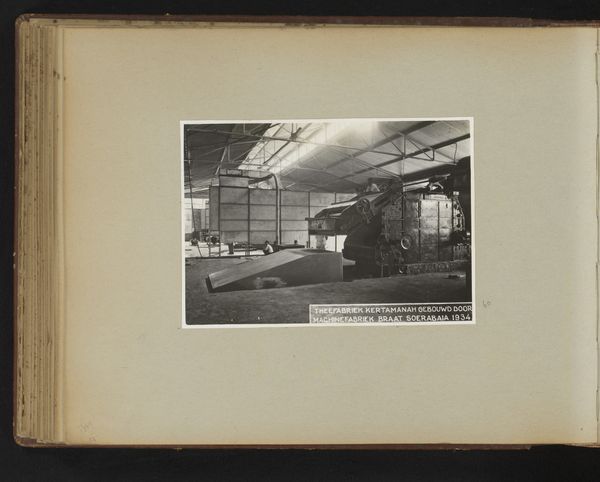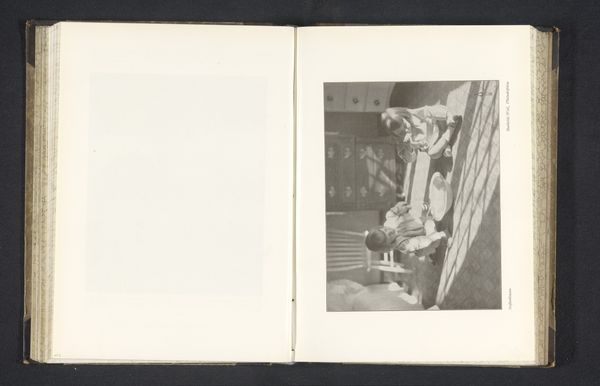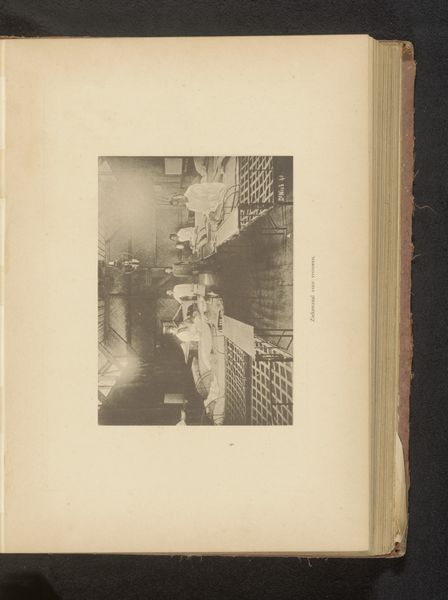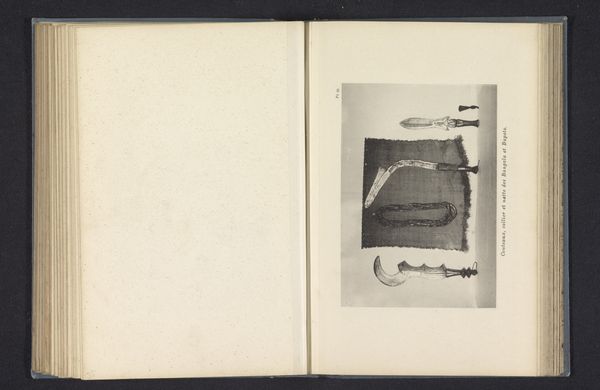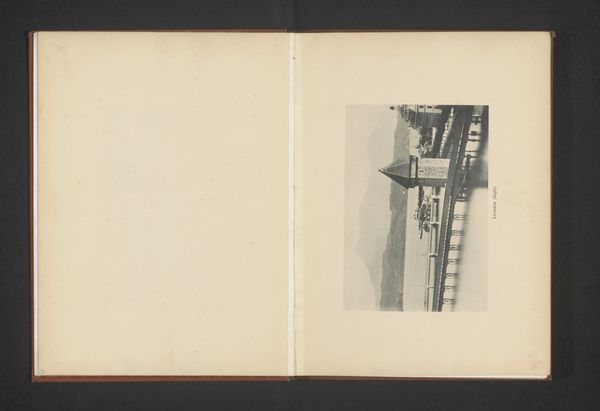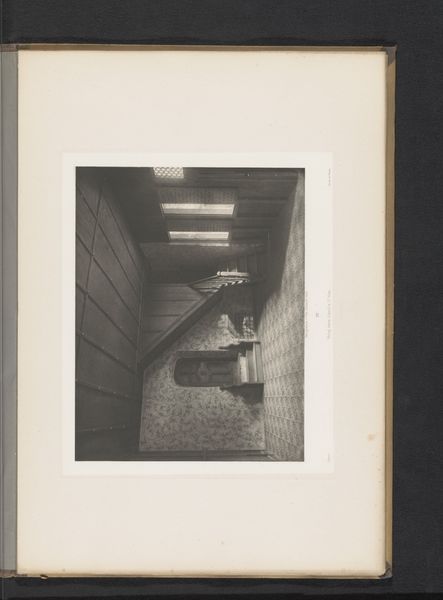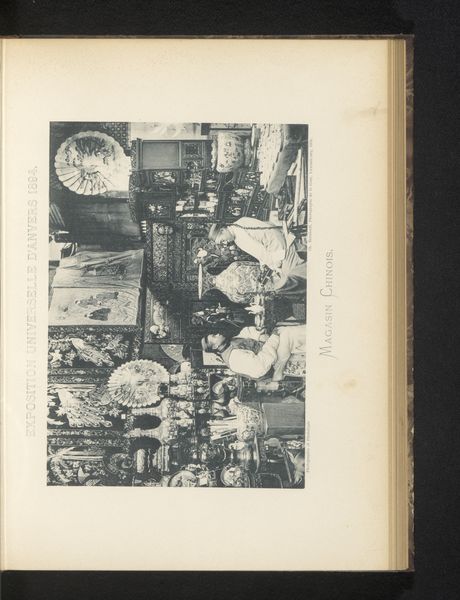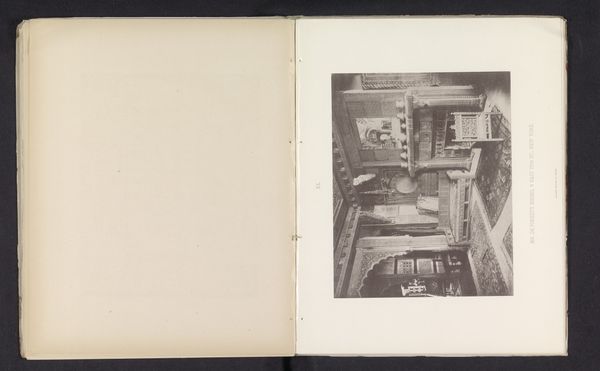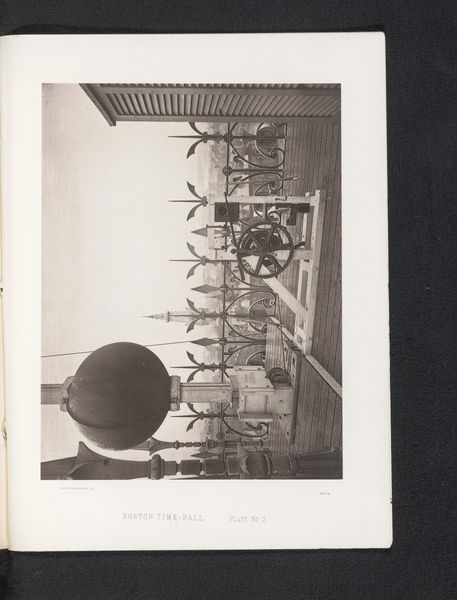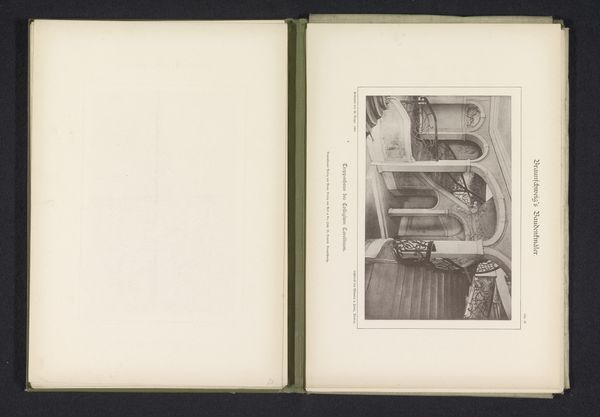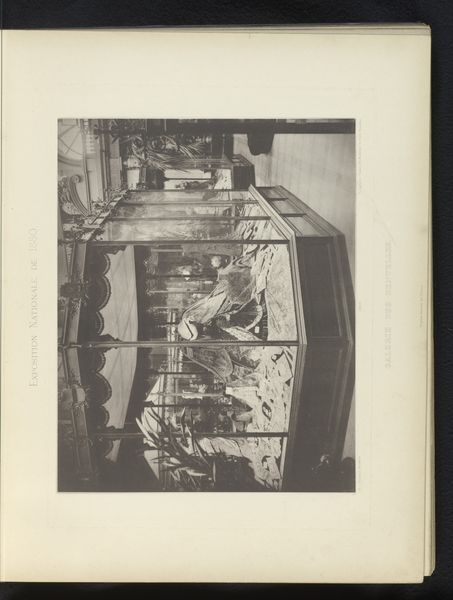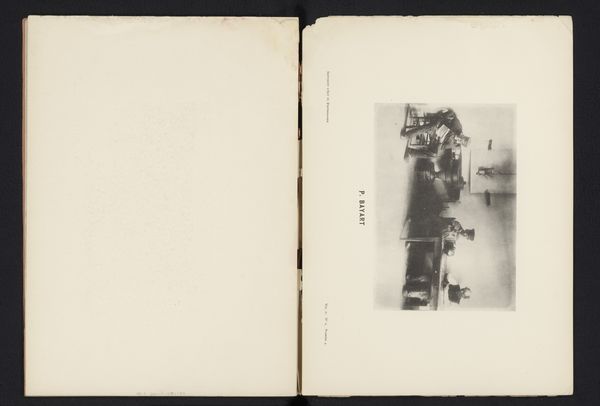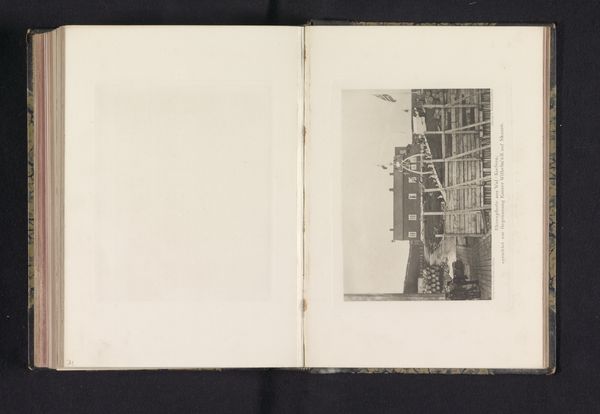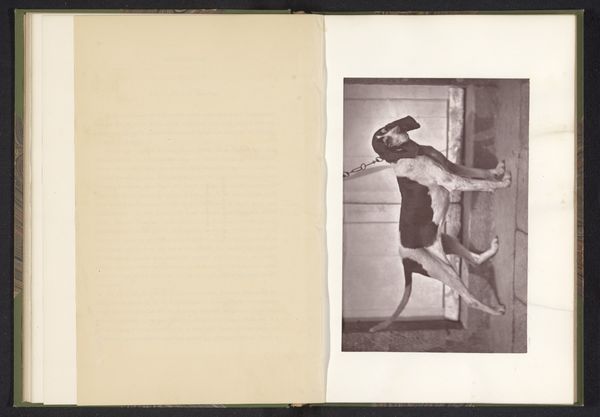
Twee schermende mannen op het terrein van de United States Naval Academy te Annapolis before 1890
0:00
0:00
photography, gelatin-silver-print
#
portrait
#
photography
#
gelatin-silver-print
#
genre-painting
#
mixed media
#
realism
Dimensions: height 240 mm, width 210 mm
Copyright: Rijks Museum: Open Domain
Curator: Looking at this photograph, I feel an immediate sense of poised anticipation, a contained energy. What leaps out at you? Editor: Well, it's definitely giving me a "West Side Story" rumble vibe, but with swords instead of switchblades. There's a playful tension there, but also something a bit performative about it all. Curator: Indeed. What we have here is an Edward H. Hart photograph entitled “Twee schermende mannen op het terrein van de United States Naval Academy te Annapolis,” which roughly translates to "Two Fencing Men on the Grounds of the United States Naval Academy at Annapolis.” It's thought to be from before 1890, and made with the gelatin-silver print process. Considering its history, how does the setting contribute to this "rumble" feeling? Editor: Knowing that it’s the Naval Academy grounds adds layers. There's the obvious element of skill, precision, almost like a dance, right? But also a sense of underlying rivalry, of men honing their abilities within this framework of institutionalized competition. It’s not just some back-alley brawl; it's strategic, calculated. Curator: Exactly. In the late 19th century, fencing wasn’t just a sport; it was intrinsically linked to gentlemanly ideals and military preparedness. This image highlights the performance of masculinity through fencing. How are gendered identities performed here? Editor: Well, look at the stance—erect, assured, controlled. The uniform isn't strictly military, but it evokes order, discipline. It feels almost like these young men are practicing not just fencing, but also the very art of presenting themselves as powerful and respectable figures. Curator: And considering intersectional politics and gender, their privileged positions at the Naval Academy place them in a nexus of power—military, social, and economic. But stepping away from the overtly political, the interplay of light and shadow and those parallel lines framing each pair seem carefully chosen to create an arresting scene. How might we read that formally? Editor: The dark vertical bands sort of break up the scene; they feel less staged because each duel is separated. And, oh gosh, sorry, am I allowed to say that the swords themselves seem phallic, suggesting the competitive element we spoke about earlier has its roots in more fundamental aspects of masculine ego? Curator: A common interpretation! Overall, considering this moment in time and culture, Hart’s photograph freezes a transient instance. It speaks to ideas around masculinity, martial arts, social standing, all intertwined in one decisive click of the shutter. What do you walk away with most strongly? Editor: A strange urge to learn fencing, mixed with a sense that things—and ideas about masculinity—thankfully have come a long way. Curator: A fitting and necessary contemporary lens through which to see our history.
Comments
No comments
Be the first to comment and join the conversation on the ultimate creative platform.
